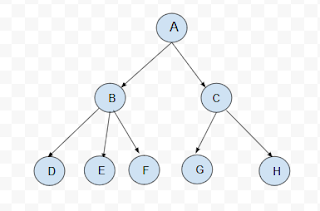Question i was asked at one of my interviews:
You have a tree structure where each node has one or more leaf nodes (children)
Write a function which will write nodes of each level sorted in alternated order:
For example - given situation like this:
The output should be:
A, C, B, D, E, F, G, H
Note C, B is in reverse order!
My First Try
This question caught me unprepared (as usual).
My first step was to implement a tree structure in javascript (since my language is JS)
const tree = {
name: 'a',
children: [
{
name: 'b',
children: [
{
name: 'd',
children: []
},
{
name: 'e',
children: []
},
{
name: 'f',
children: []
}
]
},
{
name: 'c',
children: [
{
name: 'g',
children: []
},
{
name: 'h',
children: []
}
]
}
]
}
My first idea was to store all the nodes im traversing through at some place outside the function (global variable)
And use a recursion to loop through the nodes
const arr = {}
function f(tree, level = 0) {
arr[level] = [...arr[level] || [], tree.name];
(level % 2 ? tree.children: tree.children.reverse()).forEach(ch => f(ch, level+1))
}
f(tree)
console.log({arr}) // printing all nodes at the end
More Performant Way
Since i learned (in the hard way) that recursion is less performant than usual loop (and all the things you can do with recursion you can do as well using loop), i came up with following solution:
function f(tree, level = 0) {
let queue = [], sortOrder = true;
if (!level) queue.push(tree);
// traversing through all the nodes of the tree
while (queue.length) {
let node = queue[0]; // moving to the next node (which is now the first)
console.log(node.name); // printing node
if (node.children.length){
// populting the queue with current node's children
queue = [...queue, ...node.children.sort((a,b) => (sortOrder? (a>b?1:-1) :(b>a?1:-1)))];
}
sortOrder =! sortOrder;
queue.shift(); // remove the first node from the queue (BFS, "F" is for first )
}
console.log('finished')
}
f(tree)
Note: im using here a "queue" data structure where members is added from one side and coming from other (FIFO)



